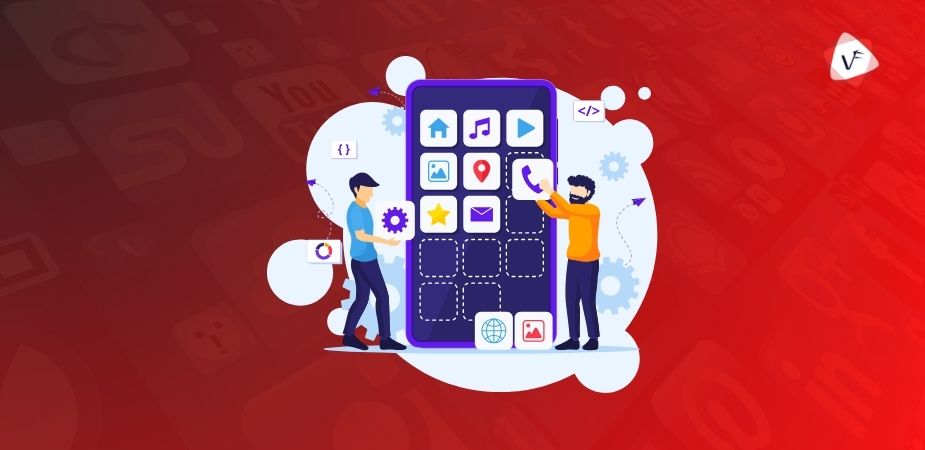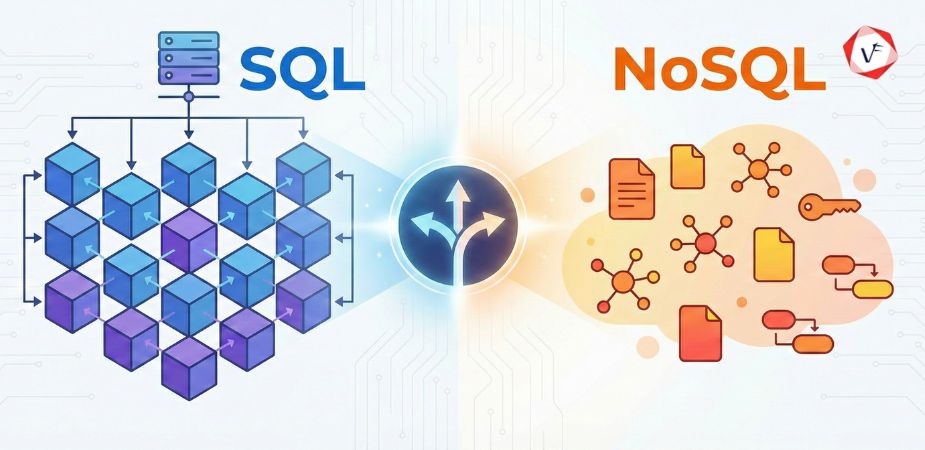- September 15, 2025 11:08 am
- by Deepthy
- September 15, 2025 11:08 am
- by Deepthy

Last Updated: September 2025 | Reading Time: 12 minutes
Choosing the right mobile app development platform in 2025 can make or break your project's success. With the global mobile app market expected to reach $614.40 billion by 2026, selecting the optimal Mobile App Development Frameworks is crucial for businesses and developers worldwide.
This comprehensive guide covers the top 10 mobile app development platforms in 2025, helping you make an informed decision based on your specific needs, budget, and technical requirements.
A mobile app development platform is a comprehensive suite of tools, frameworks, and services that enables developers to design, build, test, and deploy mobile applications efficiently. These platforms typically offer:
Modern mobile app development platforms significantly reduce development time, lower costs, and streamline the entire app creation process from conception to launch.
Best for: Cross-platform development with native performance
Market Share: 42% of developers use Flutter for cross-platform development (Stack Overflow Developer Survey 2024)
Flutter continues to dominate the cross-platform development space in 2025. Built by Google using the Dart programming language, Flutter enables developers to create high-performance applications for iOS, Android, web, and desktop from a single codebase.
Best Use Cases: E-commerce apps, social media platforms, productivity tools
Average Development Cost: $25,000 - $150,000
Best for: JavaScript developers transitioning to mobile
Market Adoption: Used by 38% of mobile developers globally
React Native remains a top choice for teams with existing React.js expertise. Maintained by Meta (formerly Facebook), it allows developers to build mobile apps using JavaScript and React principles.
Best Use Cases: Social networking apps, e-commerce platforms, content-driven applications
Average Development Cost: $20,000 - $120,000
Best for: Enterprise applications with Microsoft ecosystem integration
Enterprise Adoption: 65% of Fortune 500 companies use Microsoft development tools
Microsoft's evolution of Xamarin, .NET Multi-platform App UI (MAUI) provides a unified framework for building native cross-platform applications using C#.
Best Use Cases: Enterprise apps, business applications, Microsoft-integrated solutions
Average Development Cost: $30,000 - $200,000
Best for: Native iOS app development
iOS Market Share: iOS holds 57% market share in the US mobile market
SwiftUI is Apple's modern declarative iOS development framework for building native iOS, iPadOS, macOS, and watchOS applications with superior performance and seamless Apple ecosystem integration.
Best Use Cases: iOS-exclusive apps, Apple ecosystem applications, performance-critical apps
Average Development Cost: $15,000 - $100,000 (iOS only)
Best for: Sharing business logic while maintaining native UIs
Adoption Growth: 95% year-over-year growth in 2024
Kotlin Multiplatform allows developers to share code between Android and iOS while maintaining platform-specific UI implementations, offering the best of both worlds.
Best Use Cases: Apps requiring native UI with shared logic, gradual cross-platform migration
Average Development Cost: $35,000 - $180,000
Best for: Web developers building mobile apps
Developer Base: Over 5 million developers use Ionic worldwide
Ionic leverages web technologies (HTML, CSS, JavaScript) to build hybrid mobile applications that run inside a native WebView container.
Best Use Cases: Content-heavy apps, simple business apps, MVP development
Average Development Cost: $15,000 - $80,000
Best for: Mobile games and AR/VR applications
Gaming Market: Unity powers 50% of mobile games globally
Unity remains the industry standard for mobile game development and interactive experiences, offering comprehensive 2D/3D development tools and cross-platform deployment.
Best Use Cases: Mobile games, AR/VR applications, interactive educational content
Average Development Cost: $25,000 - $500,000+ (depending on game complexity)
Best for: Rapid enterprise app development
Enterprise Adoption: Used by 1,300+ organizations globally
OutSystems provides a comprehensive low-code platform for building, deploying, and managing enterprise mobile applications with visual development tools.
Best Use Cases: Enterprise workflow apps, internal business applications, rapid prototyping
Average Development Cost: $20,000 - $150,000 (plus platform licensing)
Best for: No-code mobile app development
No-Code Market: The no-code market is expected to reach $187 billion by 2030
Appgyver enables business users and citizen developers to create mobile applications without traditional programming skills using visual development tools.
Best Use Cases: Simple business apps, internal tools, proof-of-concept applications
Average Development Cost: $5,000 - $30,000
Best for: Native API access with JavaScript
JavaScript Popularity: JavaScript remains the most popular programming language (Stack Overflow 2024)
NativeScript enables developers to build truly native mobile applications using JavaScript, TypeScript, or Angular while providing direct access to native APIs.
Best Use Cases: Apps requiring extensive native functionality, JavaScript-first development teams
Average Development Cost: $25,000 - $140,000
Selecting the optimal mobile app development platform requires careful consideration of multiple factors. Here's a comprehensive decision framework:
| Complexity Level | Recommended Platforms | Development Time | Budget Range |
|---|---|---|---|
| Simple (Forms, content display) | Ionic, Appgyver, OutSystems | 2-4 months | $10,000-$50,000 |
| Medium (E-commerce, social features) | Flutter, React Native, .NET MAUI | 4-8 months | $50,000-$150,000 |
| Complex (Real-time features, heavy graphics) | Native, Unity, Kotlin Multiplatform | 8-18 months | $150,000-$500,000+ |
| Platform | Development Speed | Performance | Learning Curve | Community Support | Enterprise Ready |
|---|---|---|---|---|---|
| Flutter | ⭐⭐⭐⭐⭐ | ⭐⭐⭐⭐⭐ | ⭐⭐⭐ | ⭐⭐⭐⭐⭐ | ⭐⭐⭐⭐ |
| React Native | ⭐⭐⭐⭐ | ⭐⭐⭐⭐ | ⭐⭐⭐⭐ | ⭐⭐⭐⭐⭐ | ⭐⭐⭐⭐ |
| .NET MAUI | ⭐⭐⭐ | ⭐⭐⭐⭐⭐ | ⭐⭐ | ⭐⭐⭐ | ⭐⭐⭐⭐⭐ |
| SwiftUI | ⭐⭐⭐⭐ | ⭐⭐⭐⭐⭐ | ⭐⭐⭐ | ⭐⭐⭐⭐ | ⭐⭐⭐⭐ |
| Kotlin MP | ⭐⭐⭐ | ⭐⭐⭐⭐⭐ | ⭐⭐ | ⭐⭐⭐ | ⭐⭐⭐⭐ |
| Ionic | ⭐⭐⭐⭐⭐ | ⭐⭐⭐ | ⭐⭐⭐⭐⭐ | ⭐⭐⭐⭐ | ⭐⭐⭐ |
| Unity | ⭐⭐ | ⭐⭐⭐⭐⭐ | ⭐⭐ | ⭐⭐⭐⭐ | ⭐⭐⭐ |
| OutSystems | ⭐⭐⭐⭐⭐ | ⭐⭐⭐ | ⭐⭐⭐⭐⭐ | ⭐⭐⭐ | ⭐⭐⭐⭐⭐ |
| Appgyver | ⭐⭐⭐⭐⭐ | ⭐⭐ | ⭐⭐⭐⭐⭐ | ⭐⭐ | ⭐⭐⭐ |
| NativeScript | ⭐⭐⭐ | ⭐⭐⭐⭐ | ⭐⭐ | ⭐⭐⭐ | ⭐⭐⭐ |
A: For beginners, Flutter offers the best balance of ease of learning, comprehensive documentation, and job market demand. Ionic is also excellent for developers with web development background.
A: React Native and Flutter are most cost-effective for MVPs requiring cross-platform deployment. For web developers, Ionic provides the fastest path to mobile.
A: Native development (SwiftUI for iOS, Kotlin for Android) offers the best performance. For cross-platform, Flutter provides near-native performance.
A: Yes, React Native remains highly relevant with Meta's continued investment, new architecture improvements, and strong enterprise adoption.
A: .NET MAUI and OutSystems excel in enterprise environments due to strong security, integration capabilities, and long-term support.
A: Choose platforms with strong corporate backing (Google's Flutter, Meta's React Native, Microsoft's .NET MAUI), active communities, and regular updates. Avoid vendor-specific solutions without clear migration paths.
The mobile app development landscape in 2025 offers unprecedented opportunities with mature, powerful platforms catering to every development need. Your choice should align with:
The key to success isn't choosing the most popular platform—it's selecting the one that best aligns with your specific goals, team capabilities, and user needs. With the right platform choice, you'll be well-positioned to create successful mobile applications that engage users and drive business growth in 2025 and beyond.
Looking to start your mobile app development journey? Consider consulting with experienced mobile app development company in India like Vofox Solutions who specialize in your chosen platform to ensure optimal results and avoid common pitfalls.
Guaranteed Response within One Business Day!

What is Digital Twin Technology?

What are WebAssembly (WASM) Applications?
Code Review Best Practices: Complete Guide for 2026

Database Selection Guide: SQL vs NoSQL
AI Agents in Enterprise Software: How Autonomous AI is Transforming Business Operations
Subscribe to our monthly newsletter to receive the latest tech
insights,
news, and strategies straight to your inbox.